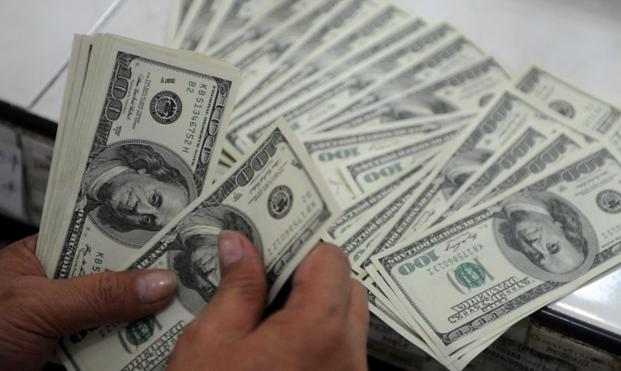
The government presented the Debt Policy Statement 2016-17 on Monday in the National Assembly, which was the first statement after the introduction of sweeping changes in the Fiscal Responsibility and Debt Limitation (FRDL) Act of 2005 in June last year.
Improved: Dar says debt profile has improved significantly
Economists had criticised these amendments, arguing that they were aimed at deflecting attention from the growing public debt.
Despite changing goalposts by amending the law, there were certain areas where the government could not show improvement. However, it was able to claim progress in certain other areas.
Headed by its Director General Ehtesham Rashid, the Debt Policy Coordination Office prepared the statement in the light of the FRDL Act aimed at reviewing the government’s management of public debt and liabilities.
The external debt-to-foreign exchange earnings ratio increased to 1.1 times, showing that Pakistan’s debt-bearing capacity weakened by the end of last fiscal year.
It is for the first time since 2012 that the ratio has weakened. In the past three years, it had remained stable, although the government excluded liabilities from the comparison last year.
Similarly, the external debt-to-gross domestic product ratio weakened from 18.8% to 20.4%.
“Apart from external inflows, the translational losses on account of depreciation of the US dollar against other foreign currencies contributed to the increase in this ratio,” noted the debt office.
The public debt-to-government revenue ratio stood at 442.5% against the generally acceptable threshold of 350%. This means less resources are available for spending on human resources and development.
Total external debt and liabilities rose 14.6% to $74.6 billion by September last year, according to the statement. The external debt and liabilities were at $61.4 billion in June 2015. In the external debt, the public debt rose to $58.7 billion.
There were certain areas where the government showed improvement. The external debt-to-foreign exchange reserves ratio slightly declined to 2.5 times, reflecting the positive impact of increase in the foreign currency reserves.
17 predictions for Pakistan’s economy in 2017
However, these reserves were not increased through non-debt creating instruments like foreign direct investment and exports. Instead, the government borrowed to push up the reserves.
There was also slight improvement in the external debt servicing-to-foreign exchange earnings ratio due to a decline in foreign debt repayments, largely because of repayment of the previous IMF loan. Going forward, the debt office has predicted that there will be limited pressure from external debt repayments in the medium term. It has projected limited pressure till fiscal year 2020-21.
Before the amendments in the FRDL law, the government was bound to keep the public debt below 60% of the total size of national economy and its revenues should be sufficient to finance at least current expenditures.
However, despite the gross public debt-to-GDP ratio at 66.5% in the last fiscal year, the government was not in violation of the law, thanks to the amendments.
For a developing country like Pakistan, a debt-to-GDP ratio below 50% is considered sustainable. Anything above this threshold is counted as dangerous in the long term, according to economists.
In three years, Pakistan has taken on $25b in fresh loans
The PML-N government has been heavily borrowing to finance its expenditures as it remains unable to mobilise domestic resources. The 66.5% ratio was 3.3% higher than the previous year. The public debt-to-government revenue ratio stood at 442.5% against the generally acceptable threshold of 350%.
The government also could not increase revenues and its receipts were not sufficient to finance the current expenditures. The revenue deficit - total revenues minus current expenses - was recorded at 0.7% of GDP in 2015-16. However, this was better than the previous year and the trend was positive.
Total public debt stood at Rs20.6 trillion at the end of September 2016, an increase of Rs3.15 trillion since June 2015.
Published in The Express Tribune, January 31st, 2017.
Like Business on Facebook, follow @TribuneBiz on Twitter to stay informed and join in the conversation.
1732503274-0/Untitled-design-(43)1732503274-0-405x300.webp)
1732501636-0/Untitled-design-(42)1732501636-0-165x106.webp)

1732498967-0/Outer-Banks--(1)1732498967-0-165x106.webp)
1732086766-0/BeFunky-collage-(74)1732086766-0-165x106.webp)
1732486769-0/image-(8)1732486769-0-270x192.webp)











COMMENTS (7)
Comments are moderated and generally will be posted if they are on-topic and not abusive.
For more information, please see our Comments FAQ